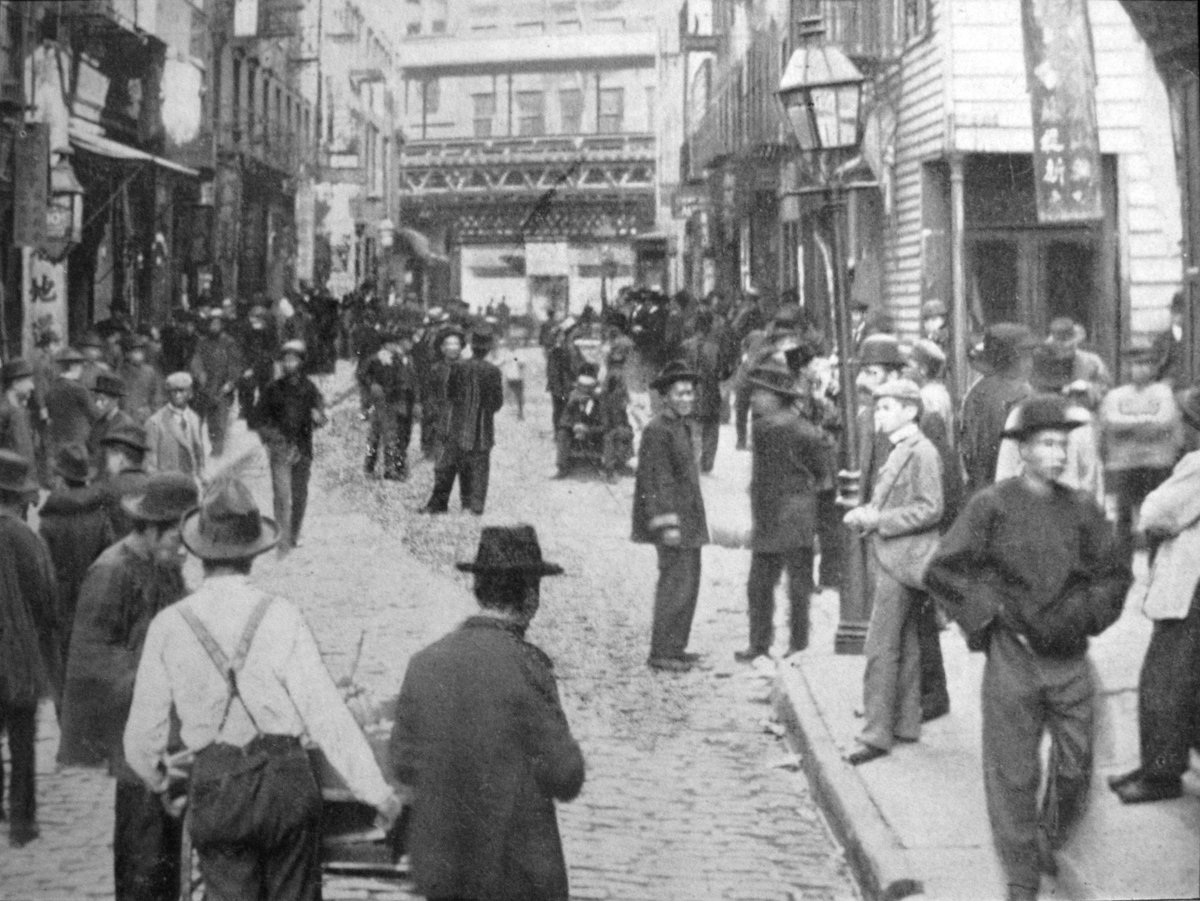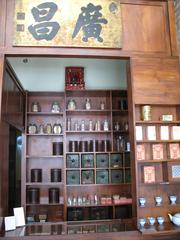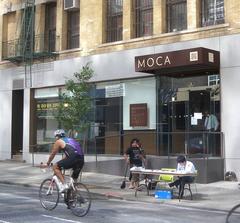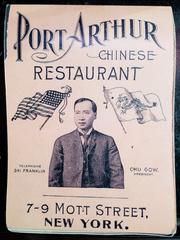
Museum of Chinese in America (MOCA): Visiting Hours, Tickets, and New York City Historical Sites Guide
Date: 14/06/2025
Introduction
Located in the heart of Manhattan’s Chinatown, the Museum of Chinese in America (MOCA) is a vital institution preserving and sharing the multifaceted history of Chinese Americans. Founded in 1980 as the New York Chinatown History Project by historian John Kuo Wei Tchen and community activist Charles Lai, MOCA has grown from a grassroots archival project into a nationally recognized museum, housing over 85,000 artifacts that chronicle more than two centuries of Chinese American experiences. MOCA’s mission is to illuminate stories often overlooked in mainstream narratives, offering visitors an immersive journey through immigration, labor, exclusion, resilience, and community-building (MOCA History; VOA News).
Housed at 215 Centre Street in a building designed by renowned architect Maya Lin, MOCA seamlessly blends modern design with nods to traditional Chinese courtyards, providing a reflective and welcoming space. Its signature exhibition, “With a Single Step: Stories in the Making of America,” uses interactive displays and artifacts to chart the Chinese American journey from the 1700s to today. In addition, MOCA features rotating exhibitions and public programs that explore themes such as activism, arts, and the diverse narratives within the Chinese American community (Go New York; Condé Nast Traveler).
MOCA is easily accessible by several subway lines, with visiting hours from Tuesday to Sunday, 11:00 AM to 6:00 PM. The museum provides discounted tickets for seniors and students, free entry for children under six, and is fully wheelchair accessible. Educational workshops, guided tours, and special cultural events make MOCA a destination for families, scholars, and tourists alike (Official MOCA website; Museums Explorer).
Despite challenges such as the 2020 archival fire and the COVID-19 pandemic, MOCA has displayed remarkable resilience, maintaining its mission through community engagement and digital outreach. A major expansion, with a new Maya Lin-designed facility, is set to open in 2025, further anchoring MOCA as a beacon for Chinese American heritage (ARTnews; Time Out).
Table of Contents
- History and Founding
- Architectural Transformation
- Collections and Exhibitions
- Visitor Information
- Resilience and Recovery: The 2020 Fire & Pandemic
- Community Engagement & Educational Initiatives
- Institutional Significance & Future Development
- Frequently Asked Questions (FAQs)
- Plan Your Visit & Stay Connected
- References
History and Founding
MOCA began in 1980 as the New York Chinatown History Project, led by John Kuo Wei Tchen and Charles Lai to document and preserve the stories of Chinese immigrants and their descendants in America. The project started in modest quarters, focusing on oral histories and community outreach. By 1984, it had moved to 70 Mulberry Street, in the heart of Chinatown, where it expanded its collections and outreach (MOCA History; ARTnews).
Architectural Transformation
Recognizing the need for a larger and more accessible space, MOCA launched a capital campaign in 2006, culminating in the opening of its purpose-built home at 215 Centre Street in 2009. The building, designed by Maya Lin, features a sky-lit atrium inspired by traditional Chinese courtyards, setting a contemplative tone for visitors (VOA News).

Collections and Exhibitions
MOCA’s collection exceeds 85,000 artifacts, including photographs, textiles, business signs, oral histories, and more, documenting the breadth of Chinese American life (Explorable Places).
Signature Exhibition: With a Single Step
This permanent exhibition offers an immersive, chronological journey through Chinese American history. It begins with the arrival of Chinese sailors in the 1700s and traces the waves of immigration, exclusion, and community-building that shaped the Chinese American experience. The exhibition incorporates interactive displays, multimedia, and recreated environments like a traditional apothecary (VOA News).
Temporary and Rotating Exhibitions
MOCA regularly presents rotating exhibitions on topics such as Asian American periodicals, queer activism, Chinese American artists, and the community’s response to crises like COVID-19. Past exhibitions include “FOLD: Golden Venture Paper Sculptures” and retrospectives on Chinese laborers and activism (MOCA Calendar; Condé Nast Traveler).

Visitor Information
Visiting Hours & Tickets
- Hours: Tuesday–Sunday, 11:00 AM–6:00 PM; closed Mondays and major holidays
- Tickets: Adults $15; Seniors (65+) $12; Students/Youth (6–18) $7–$10; Children under 6 free; MOCA members free
- Free Admission: Thursdays, 3:00–6:00 PM
- Purchase: Online or at the entrance (advance booking recommended for peak times) (Official MOCA website)
Accessibility
MOCA is fully wheelchair accessible, with elevators and accessible restrooms. Multilingual materials are available, and service animals are welcome.
Getting There
- Address: 215 Centre Street, New York, NY 10013
- Subway: Canal Street (N, Q, R, W, J, Z, and 6 lines), Grand Street (B, D lines)
- Parking: Limited street and garage parking; public transit recommended
Nearby Attractions
Explore nearby sites such as Columbus Park, Mahayana Buddhist Temple, and the Chinatown Ice Cream Factory, or enjoy authentic dining in Chinatown.
Resilience and Recovery: The 2020 Fire & Pandemic
A devastating fire in January 2020 at 70 Mulberry Street threatened MOCA’s archival collection. Thanks to swift action from city agencies and volunteers, 95% of the archive was recovered, though much required restoration (ARTnews; Explorable Places). The pandemic soon followed, deeply impacting Chinatown, but MOCA adapted through digital outreach and community programming (MOCA History).
Community Engagement & Educational Initiatives
MOCA offers a robust calendar of educational workshops, guided tours, and public programs for all ages. These initiatives, including oral history projects and art workshops, foster intercultural understanding and support local schools and community groups (MOCA Calendar; Explorable Places).
Institutional Significance & Future Development
From its origins as a community archive to its current national prominence, MOCA is a cornerstone of Chinese American heritage. The museum’s forthcoming nine-story expansion, again designed by Maya Lin, will include new galleries, a theater, genealogy center, classrooms, gardens, and a canteen, positioning MOCA as a leading cultural anchor in Chinatown (Time Out; CBS News).
Frequently Asked Questions (FAQs)
What are MOCA’s visiting hours?
Tuesday–Sunday, 11:00 AM–6:00 PM; closed Mondays and holidays.
How do I buy MOCA tickets?
Purchase online or at the entrance. Advance booking is recommended.
Is MOCA wheelchair accessible?
Yes, the museum is fully accessible.
Where is MOCA located?
215 Centre Street, Manhattan, NY, near Canal Street and Grand Street subway stations.
Are guided tours available?
Yes, including free gallery talks and paid Chinatown walking tours.
Are there free admission days?
Yes, Thursdays from 3:00–6:00 PM.
Can I take photos inside?
Non-flash photography is allowed in most galleries; some temporary exhibitions may have restrictions.
Plan Your Visit & Stay Connected
Plan your visit by checking the latest on hours, tickets, and events via the official MOCA website. Download the Audiala app for personalized guided tours, and follow MOCA on social media for updates on exhibitions and community programs.
Enhance your experience by exploring Chinatown’s historical sites, joining cultural festivals, or participating in MOCA’s educational workshops. For a quieter visit, consider weekday mornings.
References
- MOCA History
- ARTnews
- VOA News
- Museums Explorer
- Go New York
- Best New York Tours
- Time Out
- The Art Newspaper
- Condé Nast Traveler
- CBS News
- Explorable Places
Experience history, culture, and community at MOCA—where the Chinese American journey comes vividly to life in New York City.


























































































































































































































































































